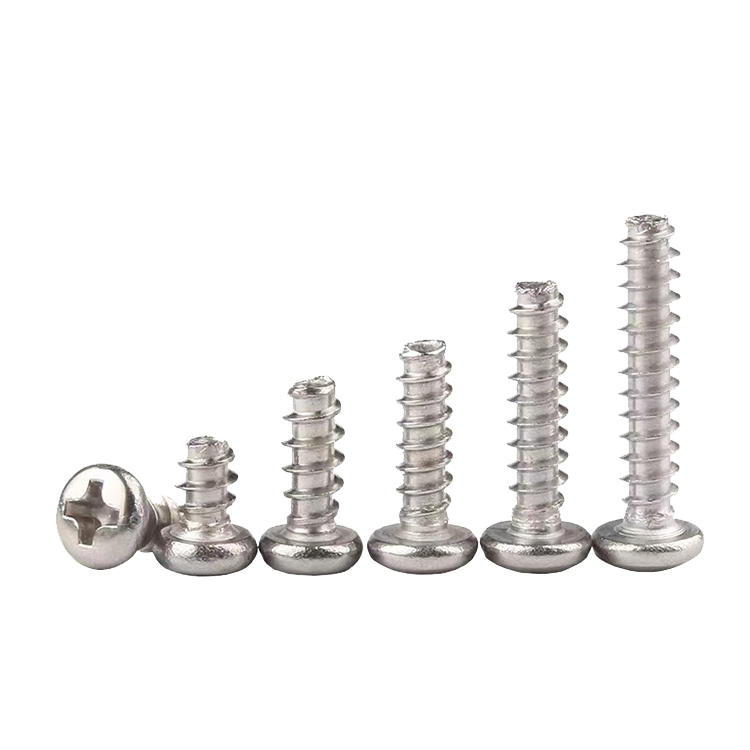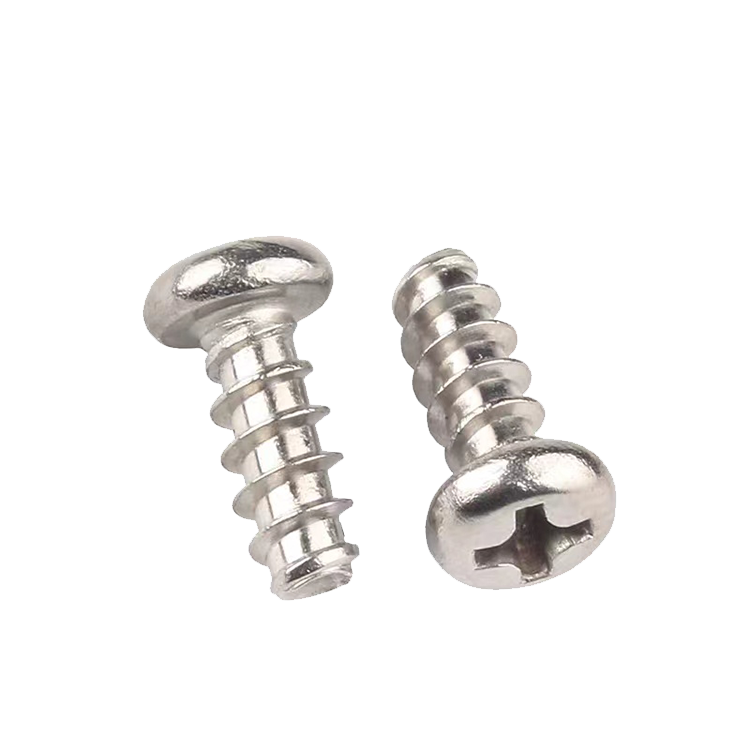

When it comes to choosing the right screw for your project, understanding the differences between various types of screws is essential. Two of the most commonly used screws are the round head phillips screw and the flat head Phillips screw. While both belong to the Phillips screw family and feature a cross-shaped socket for easier driving, their design differences play a significant role in their applications. Let's explore the key differences between a round head Phillips screw and a flat head Phillips screw, and how these variations affect their performance in different projects.

1. Head Shape and Design
The most obvious difference between a round head Phillips screw and a flat head Phillips screw is their head shape:
Round Head Phillips Screw: A round head screw has a fully rounded, dome-like shape. This type of screw is generally used when the screw needs to stand proud of the surface. The round head can create a more prominent finish, making it ideal for decorative purposes or when the screw is not intended to be flush with the material.
Flat Head Phillips Screw: In contrast, a flat head screw has a flat, countersunk design that allows it to sit flush with or slightly below the surface of the material. The flat head is often used in applications where a smooth, even surface is important, such as in carpentry or metalworking, where a clean appearance is desired.
2. Purpose and Application
The differences in head shape directly influence the applications of these screws:
Round Head Phillips Screws: Due to their raised heads, round head Phillips screws are often used in decorative applications or when a visible fastener is part of the design. They are commonly found in furniture, decorative fixtures, or where additional pressure is not a concern.
Flat Head Phillips Screws: Flat head screws are more commonly used when the screw needs to be countersunk into the material. Their flat, flush design allows them to be driven deeper into the material, creating a smooth surface. This is crucial in applications like woodworking, electronics, or construction, where a clean and seamless finish is required.
3. Ease of Use and Installation
Round Head Phillips Screws: These screws are easier to drive into materials like wood, plastic, or metal because the head doesn’t sink into the material. This feature makes them less prone to causing damage to the surface, especially in softer materials.
Flat Head Phillips Screws: The countersunk design of flat head screws allows them to fit neatly into pre-drilled holes, ensuring a more secure fit and preventing protrusion. However, installation may require more precision, especially when countersinking is needed, as the head must sit flush with the surface.

4. Strength and Durability
While both types of screws offer strong fastening, their structural integrity can vary depending on the material used and the application:
Round Head Phillips Screws: These screws are strong but may not provide the same amount of surface contact as flat head screws. Therefore, they are best for lighter applications or when the screw is not bearing heavy loads.
Flat Head Phillips Screws: Flat head screws generally provide better surface contact, making them more suitable for applications where durability and resistance to pressure are key. This makes them ideal for structural or heavy-duty uses.
5. Aesthetic Considerations
Round Head Phillips Screws: Due to their visible design, round head screws are often used when the screw head will be seen. They can be used for aesthetic purposes in consumer products or for decorative accents in furniture and cabinetry.
Flat Head Phillips Screws: Flat head screws are typically used when the screw needs to be hidden or needs to blend in with the surrounding surface. This makes them more discreet and suitable for clean, seamless designs.

Conclusion
The choice between a round head Phillips screw and a flat head Phillips screw ultimately depends on the specific needs of your project. Round head screws are perfect for decorative uses or when the screw needs to stand proud of the surface. On the other hand, flat head screws are ideal for applications requiring a flush, seamless finish, making them perfect for structural or functional purposes. By understanding the differences between these screws, you can select the right one for your needs, ensuring a more effective and aesthetically pleasing result.
Whether you're working on a DIY project, assembling furniture, or designing a product, the right screw choice will not only impact the final look but also the durability and functionality of your work.